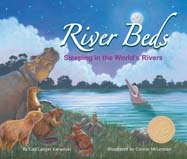Alignment to Standards for GA

| Grade | Number | Standard |
|---|---|---|
| 1 | M&G.1. | use cardinal directions |
| 1 | S1CS4. c | Compare very different sizes, weights, ages (baby/adult), and speeds (fast/slow) of both human made and natural things. |
| 1 | S1L1. d. | Compare and describe various animalsãappearance, motion, growth, basic needs. |
| 1 | SS1G3 c. | Identify and describe landforms (mountains, deserts, valleys, plains, plateaus, and coasts). |
| 2 | S2CS4.d. | Compare very different sizes, weights, ages (baby/adult), and speeds (fast/slow) of both human made and natural things. |
| 3 | M&G.3. | use a letter/number grid system to determine location |
| 3 | S3CS4. b. | Use geometric figures, number sequences, graphs, diagrams, sketches, number lines, maps, and stories to represent corresponding features of objects, events, and processes in the real world. |
| 3 | S3L1. | Students will investigate the habitats of different organisms and the dependence of organisms on their habitat. |
| 3 | S3L1. a. | Differentiate between habitats of Georgia (mountains, marsh/swamp, coast, Piedmont, Atlantic Ocean) and the organisms that live there. |
| 3 | S3L1. c. | Identify features of animals that allow them to live and thrive in different regions of Georgia. |
| 3 | SS3G1a. | Identify major rivers of the United States of America: Mississippi, Ohio, Rio Grande, Colorado, Hudson. |
| 4 | S4CS4. b. | Use geometric figures, number sequences, graphs, diagrams, sketches, number lines, maps, and stories to represent corresponding features of objects, events, and processes in the real world. |
| 4 | S4L2. | identify factors that affect the survival or extinction of organisms such as adaptation, variation of behaviors (hibernation), and external features (camouflage and protection). |
| 4 | S4L2. a. | Identify external features of organisms that allow them to survive or reproduce better than organisms that do not have these features (for example: camouflage, use of hibernation, protection, etc.). |
| 5 | S5CS4. b. | Use geometric figures, number sequences, graphs, diagrams, sketches, number lines, maps, and stories to represent corresponding features of objects, events, and processes in the real world. Identify ways in which the representations do not match their ori |
| 5 | S5L1. | classify organisms into groups and relate how they determined the groups with how and why scientists use classification. |
| 5 | S5L1. a. | Demonstrate how animals are sorted into groups (vertebrate and invertebrate) and how vertebrates are sorted into groups (fish, amphibian, reptile, bird, and mammal). |
| 5 | S5L2. | Students will recognize that offspring can resemble parents in inherited traits and learned behaviors. |
| 5 | S5L2. a. | Compare and contrast the characteristics of learned behaviors and of inherited traits. |
| K | SKCS4.c | Compare very different sizes (large/small), ages (parent/baby), speeds (fast/slow), and weights (heavy/light) of both manmade and natural things. |
| K | SKCS5.A | Describe and compare things in terms of number, shape, texture, size, weight, color, and motion. |
| K | SKE2. c | Recognize earth materialsã soil, rocks, water, air, etc. |
| K | SKL1. b | Group animals according to their observable features such as appearance, size, motion, where it lives, etc. (Example: A green frog has four legs and hops. A rabbit also hops.) |
| K | SKL2. | Students will compare the similarities and differences in groups of organisms. |
| K | SKL2. a | Explain the similarities and differences in animals. (color, size, appearance, etc.) |
| K | SSKG2 a. | Differentiate land and water features on simple maps and globes. |
| K | SSKG2 b. | Explain that maps and globes show a view from above. |
| K | SSKG2 c. | Explain that maps and globes show features in a smaller size. |